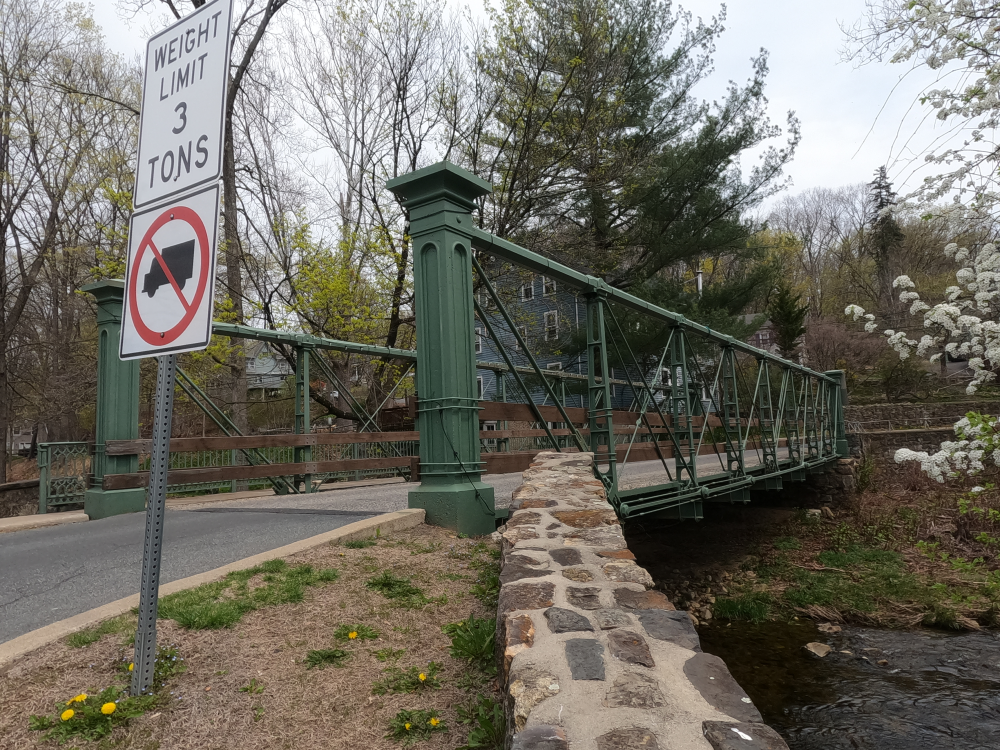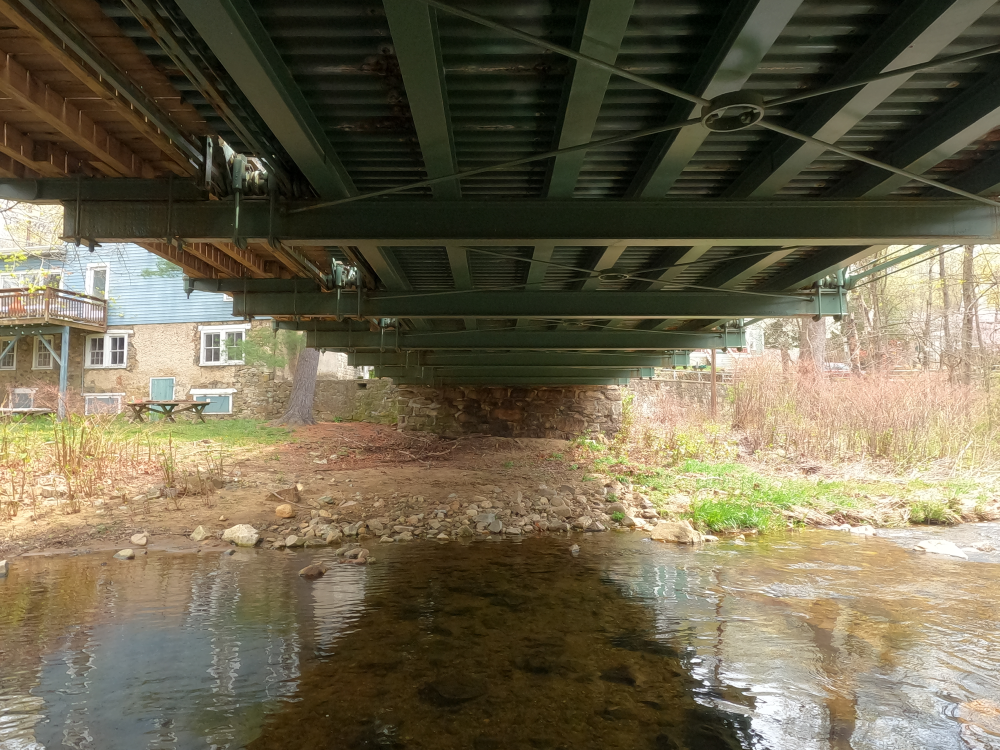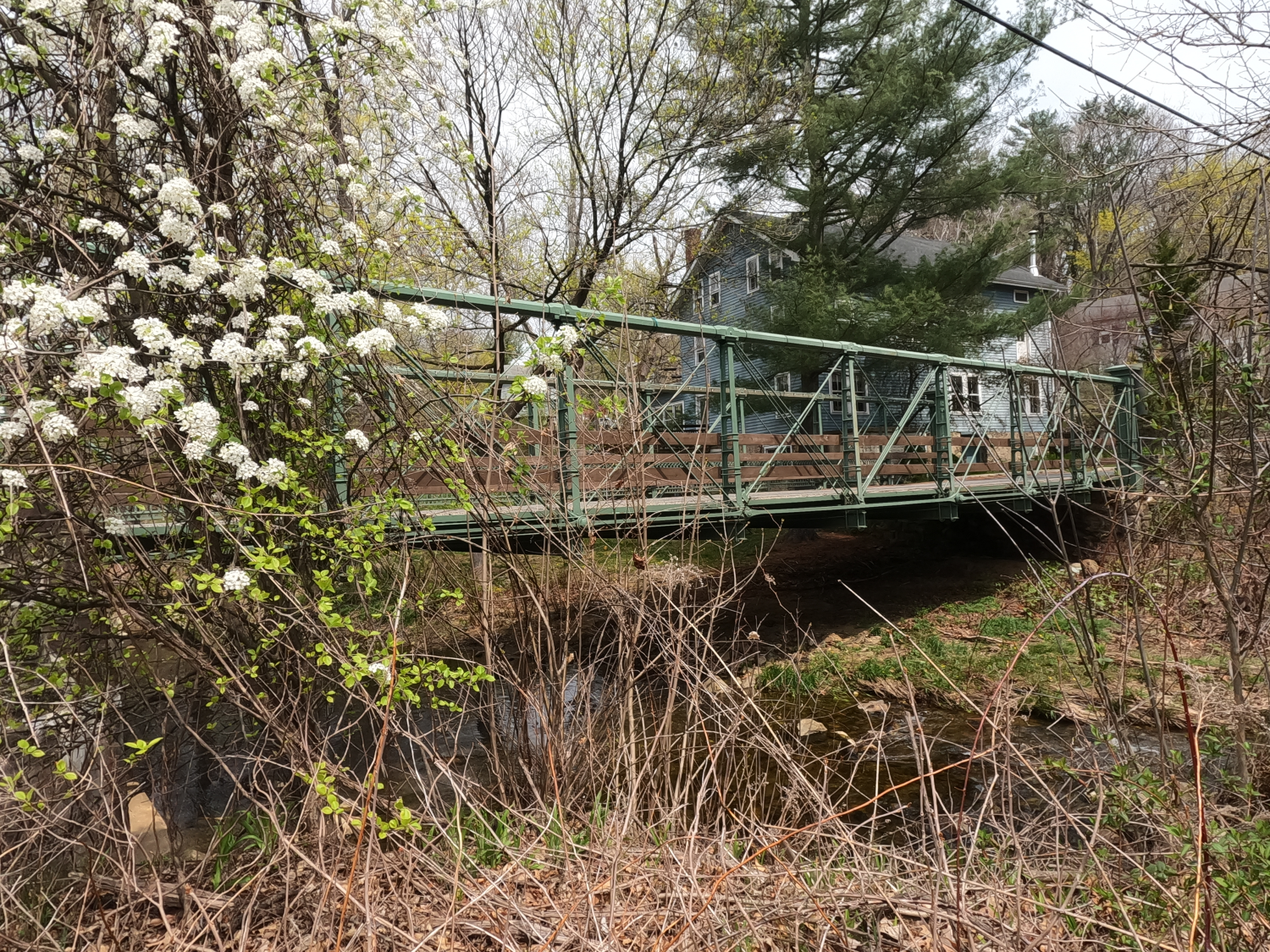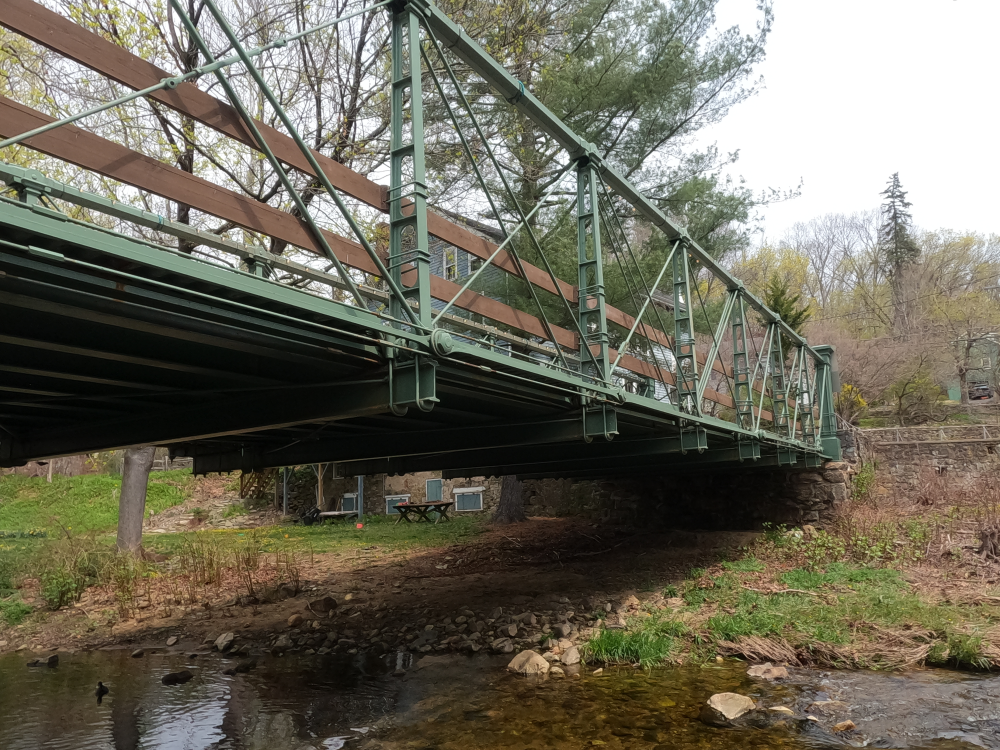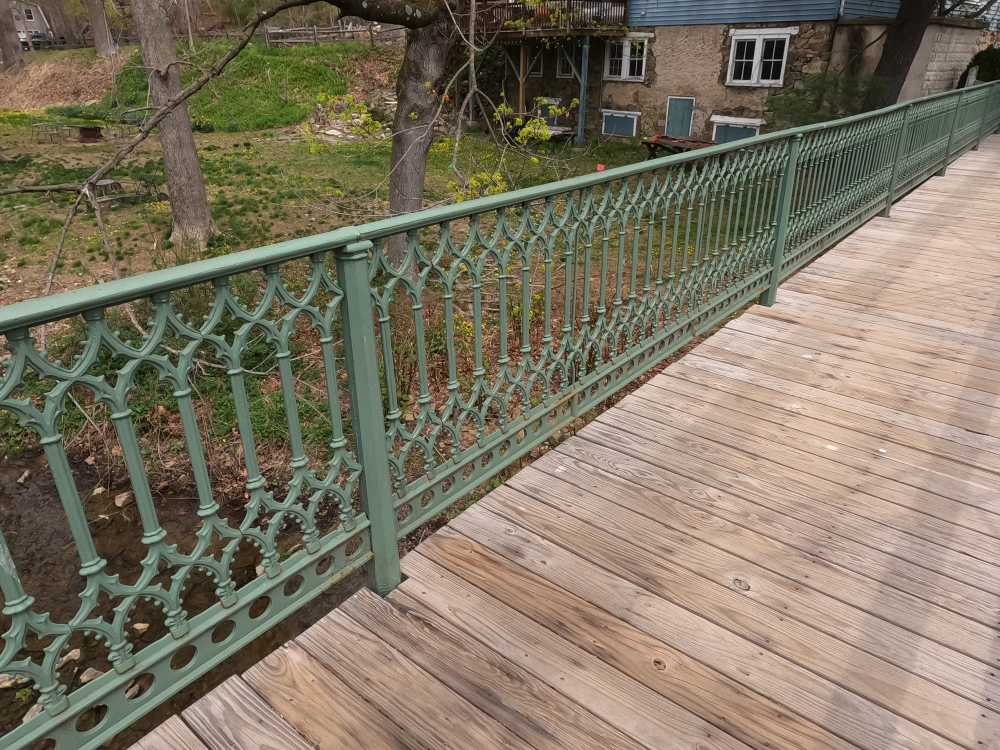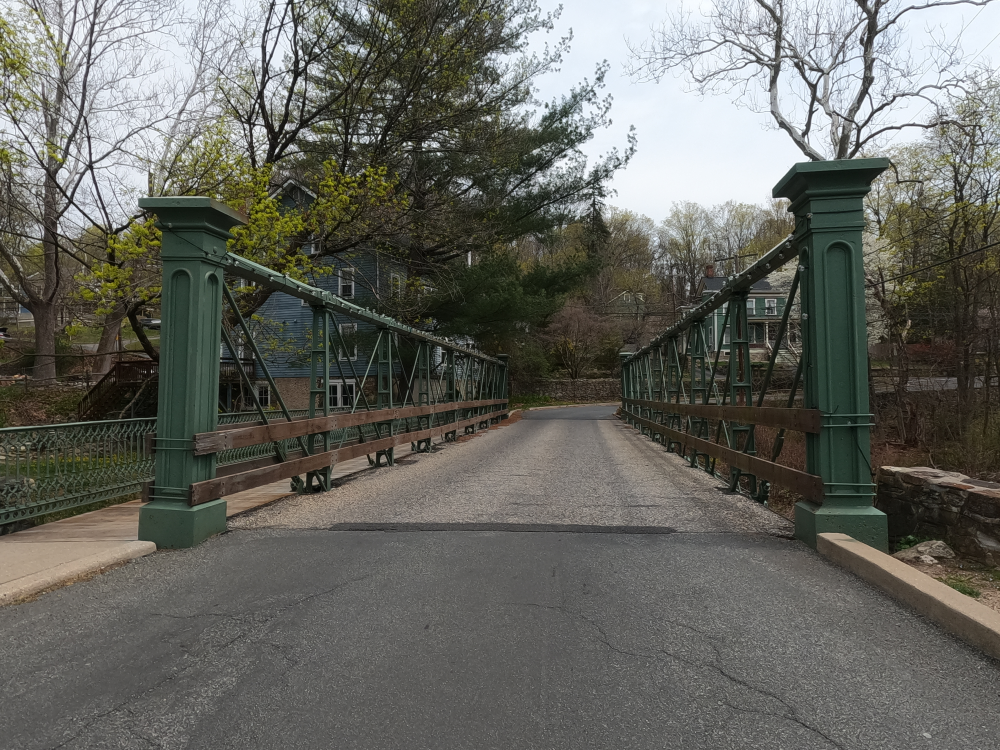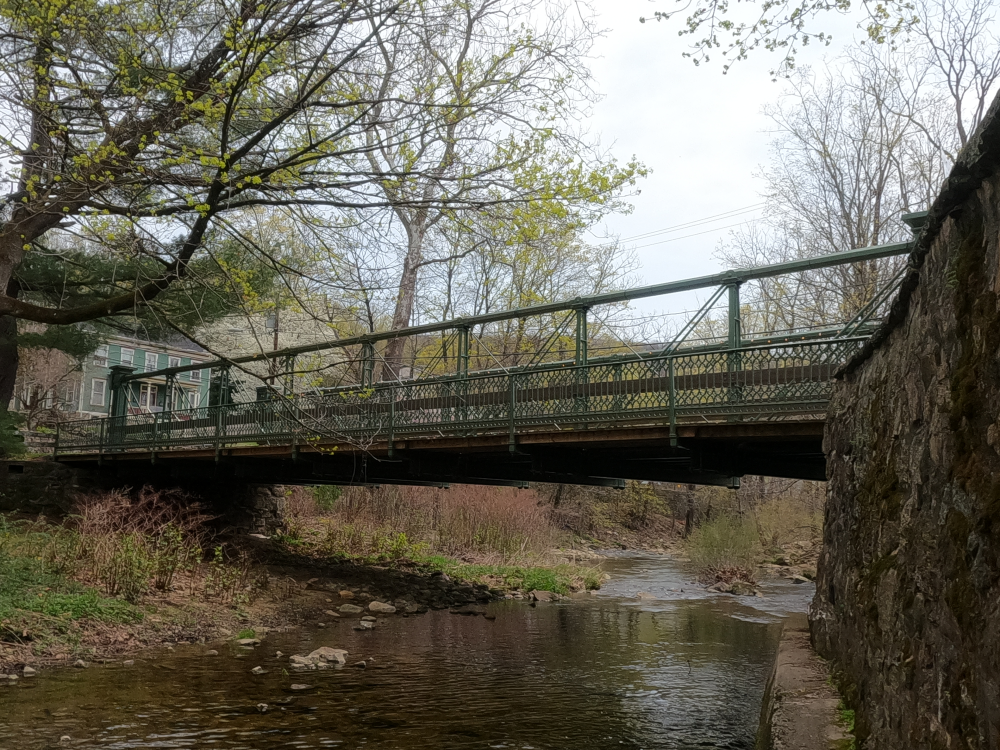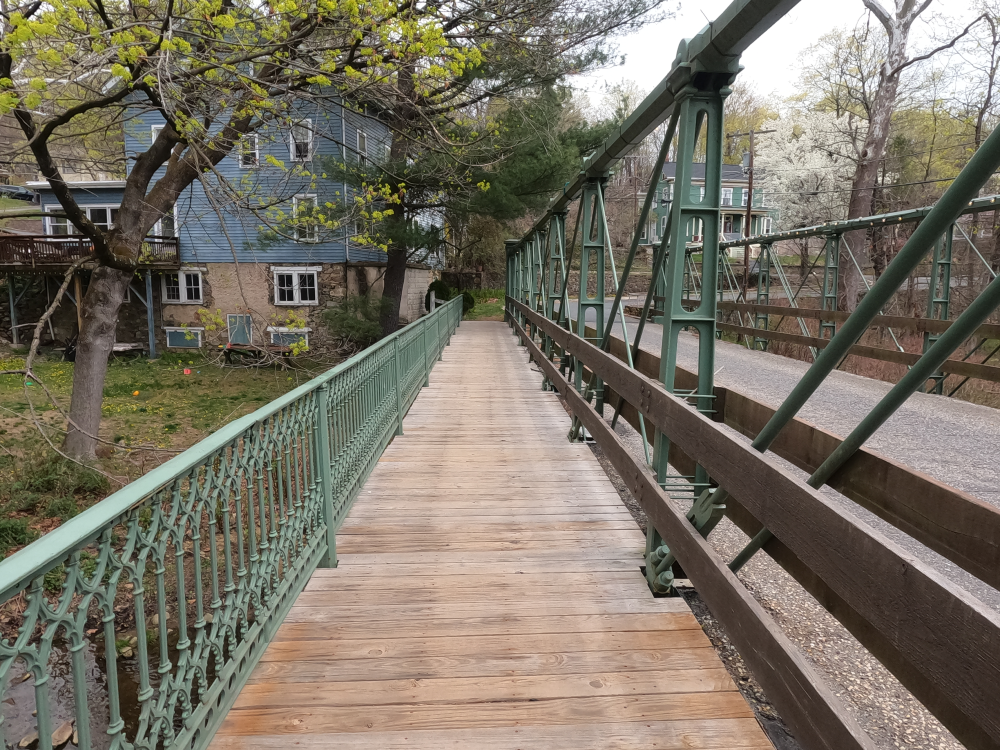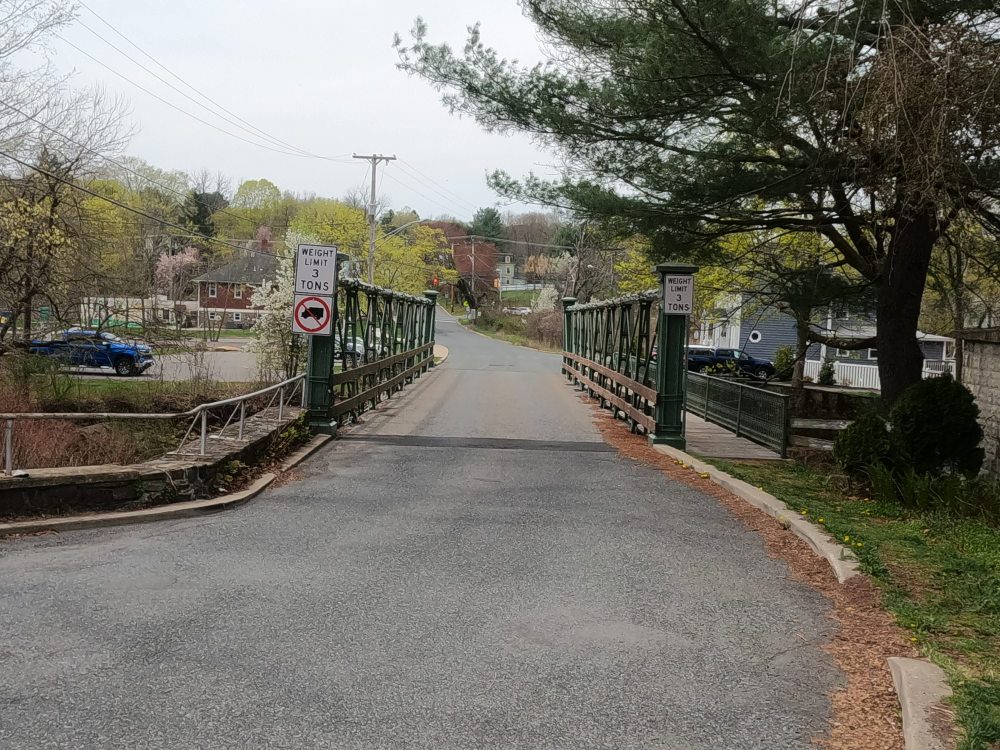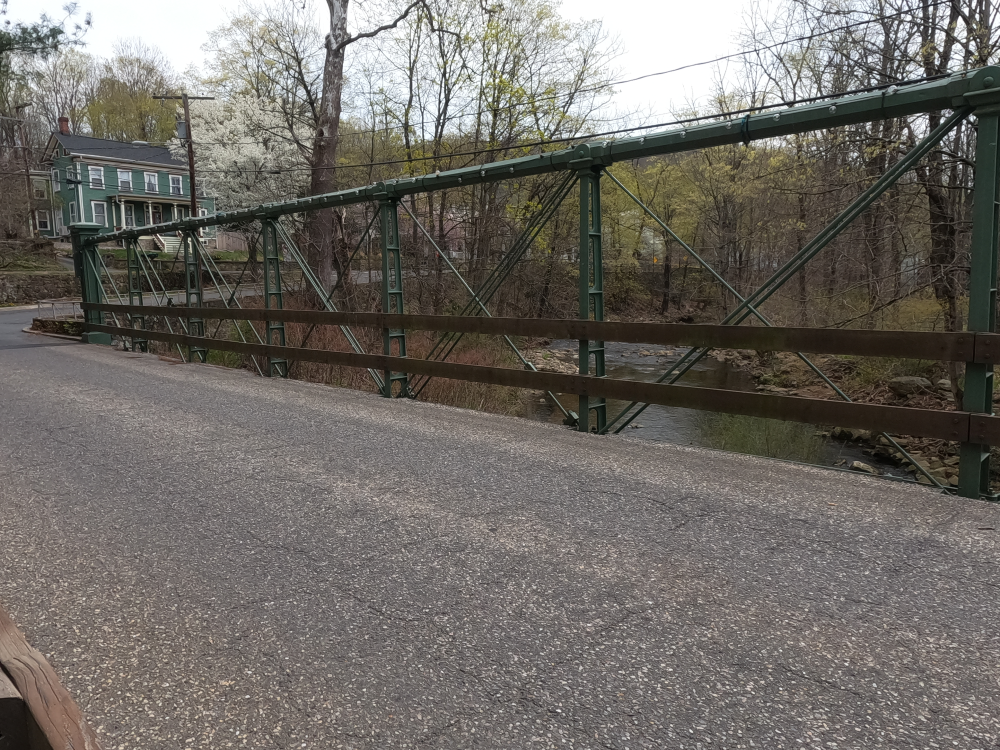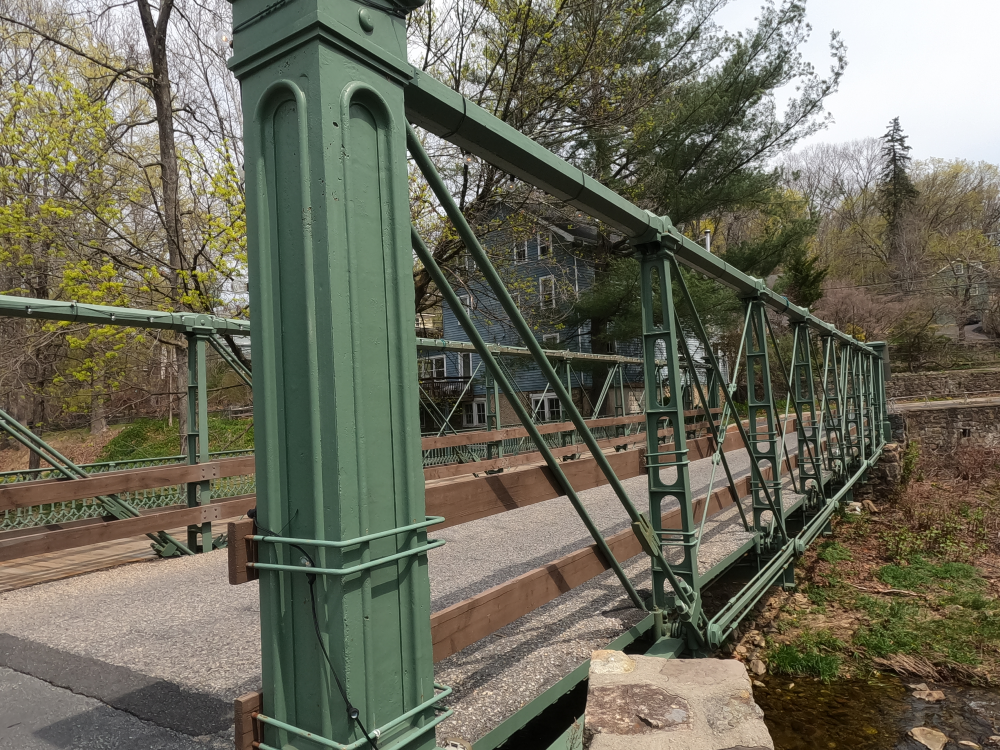
Glen Gardner Bridge
NBI Information
Location
State: New Jersey
County: Hunterdon County
Feature Carried: School Street
Feature Crossed: Spruce Run
Latitude, Longitude: 40.7012,-74.9436
Toll: On free road
Maintenance Responsibility: County Highway Agency
Structure Open, Posted, or Closed to Traffic: Posted for load (may include other restrictions such as temporary bridges which are load posted)
History
Year Built: 1870
Historical Significance: Bridge is eligible for the National Register of Historic Places.
Year Reconstructed: 2021
Picture Date: April 19, 2025
Geometry
Lanes on Structure: 1
Lanes under Structure: 0
Skew: 0 degrees
Number of Main Spans: 1
Main Structure Type: Truss - Thru
Main Structure Material: Aluminum, Wrought Iron, or Cast Iron
Number of Approach Spans: None
Approach Structure Type: None
Approach Structure Material: None
Condition
Inspection Date: August 2023
Deck Condition: Satisfactory
Superstructure Condition: Fair
Substructure Condition: Satisfactory
Channel Condition: Satisfactory
Culvert: Not Applicable
NBI Year: 2024
Bridge Information
The Glen Gardner Bridge is a historic Pratt pony truss. It is one of the few early examples of iron Pratt truss bridges remaining in the United States and is among the oldest truss bridges in the country. The bridge remains amazingly intact and unaltered considering its age, with no evidence of major alterations. This bridge is considered one of the most significant historic bridges in the country. There are two other similar bridges in New Jersey (the New Hampton Bridge and the Main Street Bridge), but this bridge has the highest level of historic integrity.
This bridge is also a rare example of a composite cast iron and wrought iron bridge. It utilizes cast iron for the compression members and chords and wrought iron for the tension members. This gives the bridge a complex appearance, but in reality, it is a simple pin-connected Pratt pony truss with vertical members. However, the detail and design was done in a way to architecturally embellish the bridge. In fact, no additional decorations or embellishments were added apart from the bridges structural components. This was possible because cast iron allowed the fabrication to shape the beams in any way they desired. This was unachievable with the wrought iron and steel beams that were used in later bridges. This is particularly evident on the top chord of the bridge, where the builder inscriptions were cast in instead of using a separate bridge plaque. Unfortunately decorative lighting was been temporarily attached the the bridge which obscures these inscriptions.
The unique architectural embellishments on this bridge include square vertical iron end posts and hollow octagonal iron top tube. These elements are protected by a wooden guiderail. This railing was replaced in 1949, but it conforms closely to the original. The bridge also has a wooden pedestrian walkway with ornate cast iron railings.
The stringers were replaced in 1992, but the floorbeams but the floorbeams do not appear to have been replaced in this project and are likely the original beams. The wooden deck has also been covered with modern asphalt at some point prior to 1975.
References

